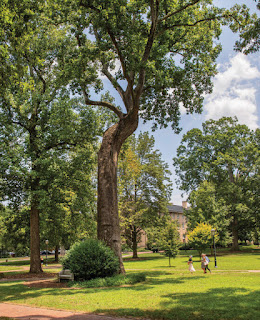Congress Never Designated Confederate Military Veterans as United States Veterans
While Confederate veterans received some benefits (widows' pensions, for example), they are still not recognized legally as U.S. veterans. While Congress provided for "headstones or markers at the expense of the United States for the unmarked graves" of Confederate soldiers in the Civil War, it did not confer on Confederate veterans equal status as U.S. veterans. The definition of "veteran," as specified by the U.S. Department of Veteran Affairs, does not include Confederate armed forces.
Any claim that Confederate veterans maintain the same legal status as U.S. veterans is false. Confederate veterans' widows and children received pensions after congressional action in 1958 well after the death of the last surviving Confederate veteran, but that action in itself did not declare those soldiers to be full U.S. veterans. The very definition of a U.S. veteran was never expanded to include Confederate soldiers –– even when they were granted amnesty by President Andrew Johnson.
_____
Public Law 85-425 (May 27, 1958) [https://www.congress.gov/85/statute/STATUTE-72/STATUTE-72-Pg133-2.pdf]
An Act
To increase the monthly rates of pension payable to widows and former widows of deceasetl veterans of the Spanish-American War, Civil War, Indian War, and Mexican War, and provide penslons to widows of veterans who served in the military or naval forces of the Confederate States of America during the Civil War.
Be it enacted hy the Senate and House of Representatives of the United States of America in Congress assembled, That the Veterans' Benefits Act of 1957 (Public Law 85-56) is amended:
(e) For the purpose of this section, and section 433, the term "veteran" includes a person who served in the military or naval forces of the Confederate States of America during the Civil War, and the term "active, military or naval service" includes active service in such forces.
CONFEDERATE FORCES VETERANS
SEC. 410. The Administrator shall pay to each person who served in the military or naval forces of the Confederate States of America during the Civil War a monthly pension in the same amounts and subject to the same conditions as would have been applicable to such person under the laws in effect on December 31, 1957, if his service such forces had been service in the military or naval service of the United States.
_____
The last confirmed Confederate Civil War veteran, Pleasant Crump, died in 1951 at age 104. https://en.wikipedia.org/wiki/Last_surviving_Confederate_veterans
_____
Determining Veteran Status: U.S. Department of Veterans' Affairs [https://www.va.gov/OSDBU/docs/Determining-Veteran-Status.pdf]
38 U.S.C. § 101(2) provides:
The term "veteran" means a person who served in the active military, naval, or air service, and
who was discharged or released therefrom under conditions other than dishonorable.
38 U.S.C. § 101(10) provides:
The term "Armed Forces" means the United States Army, Navy, Marine Corps, Air Force, and Coast Guard, including the reserve components thereof.
_____
BY THE PRESIDENT OF THE UNITED STATES OF AMERICA.
A PROCLAMATION. December 25, 1868
Now, therefore, be it known that I, Andrew Johnson, President of the United States, by virtue of the power and authority in me vested by the Constitution, and in the name of the sovereign people of the United States, do hereby proclaim and declare unconditionally, and without reservation, to all and to every person who directly or indirectly participated in the late insurrection or rebellion, a full pardon and amnesty for the offence of treason against the United States, or of adhering to their enemies during the late civil war, with restoration of all rights, privileges, and immunities under the Constitution and the laws which have been made in pursuance thereof.
https://www.loc.gov/resource/rbpe.23602600/?st=text
_____
https://www.usatoday.com/story/news/factcheck/2020/06/29/fact-check-confederate-veterans-not-considered-u-s-veterans/3263720001/
https://www.snopes.com/fact-check/confederate-soldiers-veterans/
__________
Public Law 810 refers to Part II, Chapter 23 of U.S. Code 38 which states that the federal government should, when requested, pay to put up monuments or headstones for unmarked graves for three groups of people:
(1) Any individual buried in a national cemetery or in a post cemetery.
(2) Any individual eligible for burial in a national cemetery (but not buried there), except for those persons or classes of persons enumerated in section 2402(a)(4), (5), and (6) of this title.
(3) Soldiers of the Union and Confederate Armies of the Civil War.
No portion of the law confers any privilege other than markers for graves of Confederate soldiers, nor does it grant Confederate soldiers status equal to those of veterans of the United States military. As of 1901, 482 individuals (not all soldiers) were already interred in the Confederate section of Arlington National Cemetery. Being buried there did not, of course, confer any legal status as a U.S. veteran.







%20This%20is%20one%20of%20twenty-five%20distinctive%20S-shaped%20newels%20attributed%20to%20Day.%20jpg.jpg)

